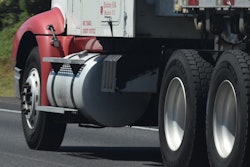
In 1999 I decided to apply for my own authority. But before doing so I wanted to make sure I had all my ducks in a row. I began to prepare. Secured the money for the down payment on a truck and trailer, saved enough operating capital for a minimum of 30 days, established a customer base, and developed a financial back-up plan if things went south on me. With all those items in place I was confident I had planned well and was prepared to get my own authority. I promptly did so.
It wasn’t until I became an insurance agent that I discovered my plans should have started years earlier. Simply put, I did not do any of the preparation I should have done to lower my initial insurance premium. The first year I was in business my annual premium cost me as much as the price I paid for my truck! So just what was it that caused my insurance premium to be so outrageous that first year I was in business?
Insurance companies rate us by several factors. Some of those factors most of us are aware of and include things such as our age, details on our MVR (Motor Vehicle Record), years of driving experience (with a CDL) and years in business. Yet there’s a lot more to it than that, too. There are more factors many of us, including me when I first began, aren’t aware of. Those are factors like our credit reports, business address, severity of the items on the MVR, prior insurance claims (including those in personal vehicles). In recent years, too, our CSA BASIC scores, and many more factors besides.

[Related: Liability insurance rates just keep rising for independents]
Each insurance company chooses to use or not use some of these items. I’ve listed the factors that are commonly used across the majority of the insurance industry. Some of them provide insurance companies with information that can impact how we are rated with another factor or even factors. For instance, if our place of business has an address in Oklahoma, the insurance company expects our driver’s license to be in Oklahoma as well. So if for example we have a California driver’s license that causes an unexpected mismatch; that unexpected mismatch will almost always cause a significant insurance premium increase. Additionally, if we declare to the insurance company on our application that we are going to operate within a 500-mile radius of our Oklahoma place of business, yet we have a California driver’s license, that causes yet another unexpected mismatch.
Insurance companies don’t like the uncertainty in those mismatches. Additionally, insurance companies know that it’s highly unlikely that a business owner lives in California and works in Oklahoma but never goes home to California with the truck. The best practice is to live in and have your driver’s license in the same state that your business is located in.
Our MVR has some of the most significant impacts on our insurance premiums, both positive and negative. As a general rule insurance companies will pull a five-year MVR report and a CLUE (Comprehensive Loss Underwriting Exchange) for a complete history of insurance claims for all drivers listed on an application.
In my case, as I disclose on my website LeartToTruck.com, I was initially what us old-timers referred to as an “outlaw.” The impact of being an outlaw was all over the pages of my MVR. I had several speeding tickets, a previous 90-day CDL suspension in one state and a prior suspended license. Additionally, my CLUE report had a not-at-fault accident listed that was settled out of court by the insurance company for a very large sum of money.
If we have a history of insurance claims in either commercial or personal vehicles, it will be immediately evident, with adverse and severe implications for our commercial auto insurance (trucking insurance) premium. When it comes to commercial auto insurance, both liability and physical damage insurance claims are viewed through two lenses.
First, all paid claims are considered an accident, even if there was no police report.
To repeat: If you have a paid claim in your history, many insurance companies consider it an accident.
[Related: How to confront the post-crash litigation threat -- start at the scene of the accident]
Second is the amount paid to settle the claim. The higher the amount paid, the higher risk we are considered to be by insurance companies.
Many of those factors are what led to my top-dollar insurance premium. In 1999, my first insurance premium was approximately $25K annually. That is a breath-taking $42K in today’s dollars! The silver lining for anyone who finds themselves in a similar situation is that you can change your driving habits and wait to get your authority until the violations drop off of the five-year history on your MVR. That is what I should have done, and would have done had I known. As you can see, my high insurance premium in 1999 was virtually all self-inflicted.
For those of you who, like me back at that time, find yourself already struggling with a high insurance premium, here’s what I did: I changed my driving habits, worked as hard as I ever have in my life, and was able to succeed at reducing my insurance premium over time.
My premium last year was a very affordable $8K with all the same coverages. With the current high demand for trucking services and excellent rates, you are in a much better situation than I was in to be able to achieve this, I believe. It can be done.
[Related: Getting your own authority: How to tackle the basics of filing, insurance and more]
If you are contemplating applying for your own authority one day or want to keep yourself in the best possible position should you ever decide to take that route, here are the best things you can do to help get the lowest possible insurance premium. They are prioritized beginning with the most important:
For the previous 5 years:
- Have a 100% (or as close as possible) clean MVR
- No distracted driving, failure to yield/stop, speeding over 25 mph, or at-fault rear-end accidents
- No auto insurance liability or physical damage claims (this includes while as an employee driver for a carrier)
- Have your license in the same state you reside in
- Have your CDL for at least 1 year (preferably up to 5 years)
- Establish your business in the same state you reside in
- Have a good credit score
Find more information about the ins and outs of trucking insurance, among a myriad other topics, in the Overdrive/ATBS-coproduced "Partners in Business" manual for new and established owner-operators, a comprehensive guide to running a small trucking business. Click here to download the 2021 edition of the Partners in Business manual free of charge.










